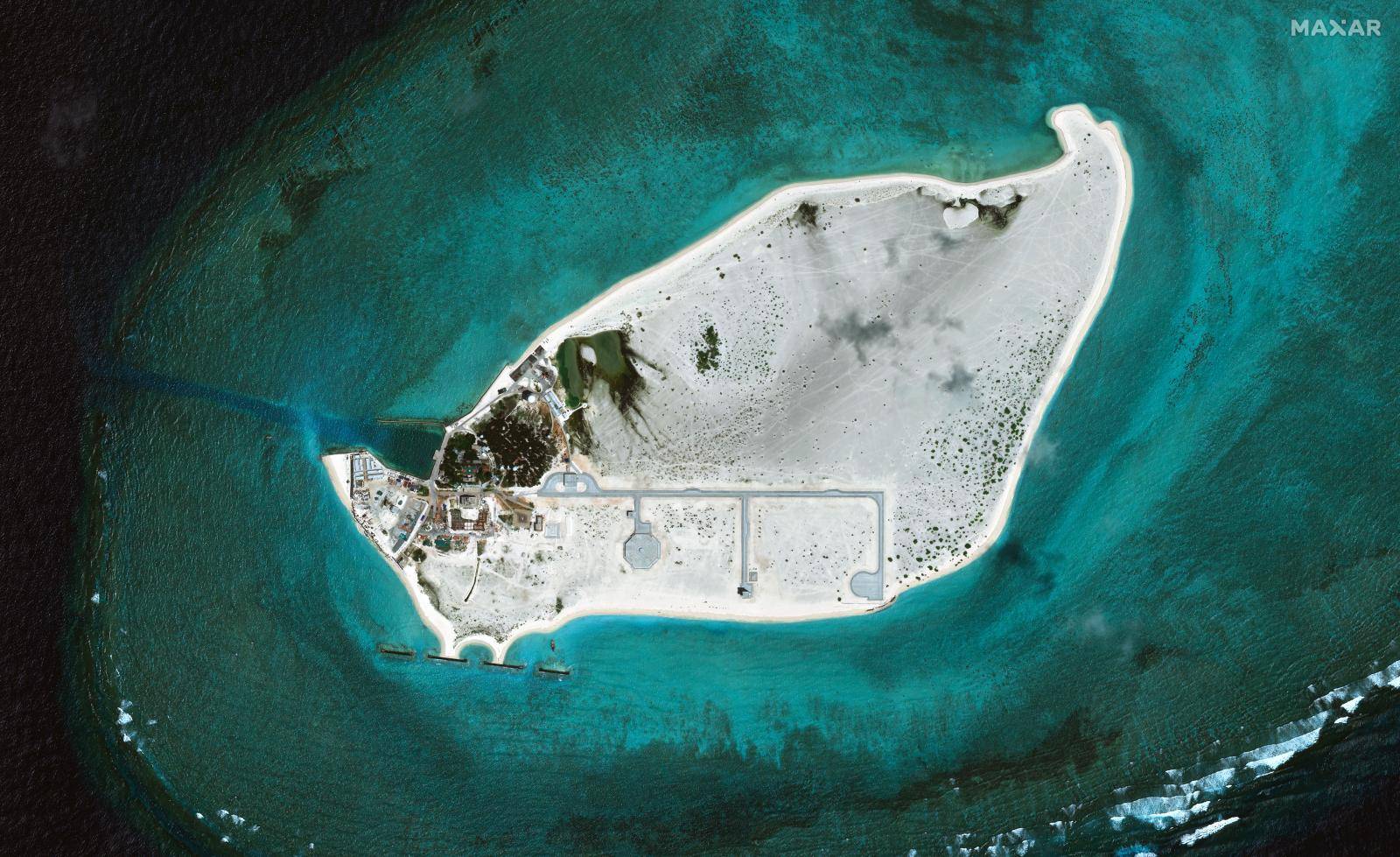The discovery of a new radar system on China’s Triton Island military base shows that Beijing is rapidly developing its intelligence capacities in contested waters, write John Pollock and Damien Symon – Chatham House.
New satellite images reveal how the Chinese military is dramatically expanding its capabilities on Triton Island, which looks set to become a one of Beijing’s key signal intelligence bases in the South China Sea.
Once completed, the radar system would significantly increase China’s signals intercept and electronic warfare capabilities across the disputed Paracel Islands archipelago and add to a wider surveillance network spanning much of the South China Sea.
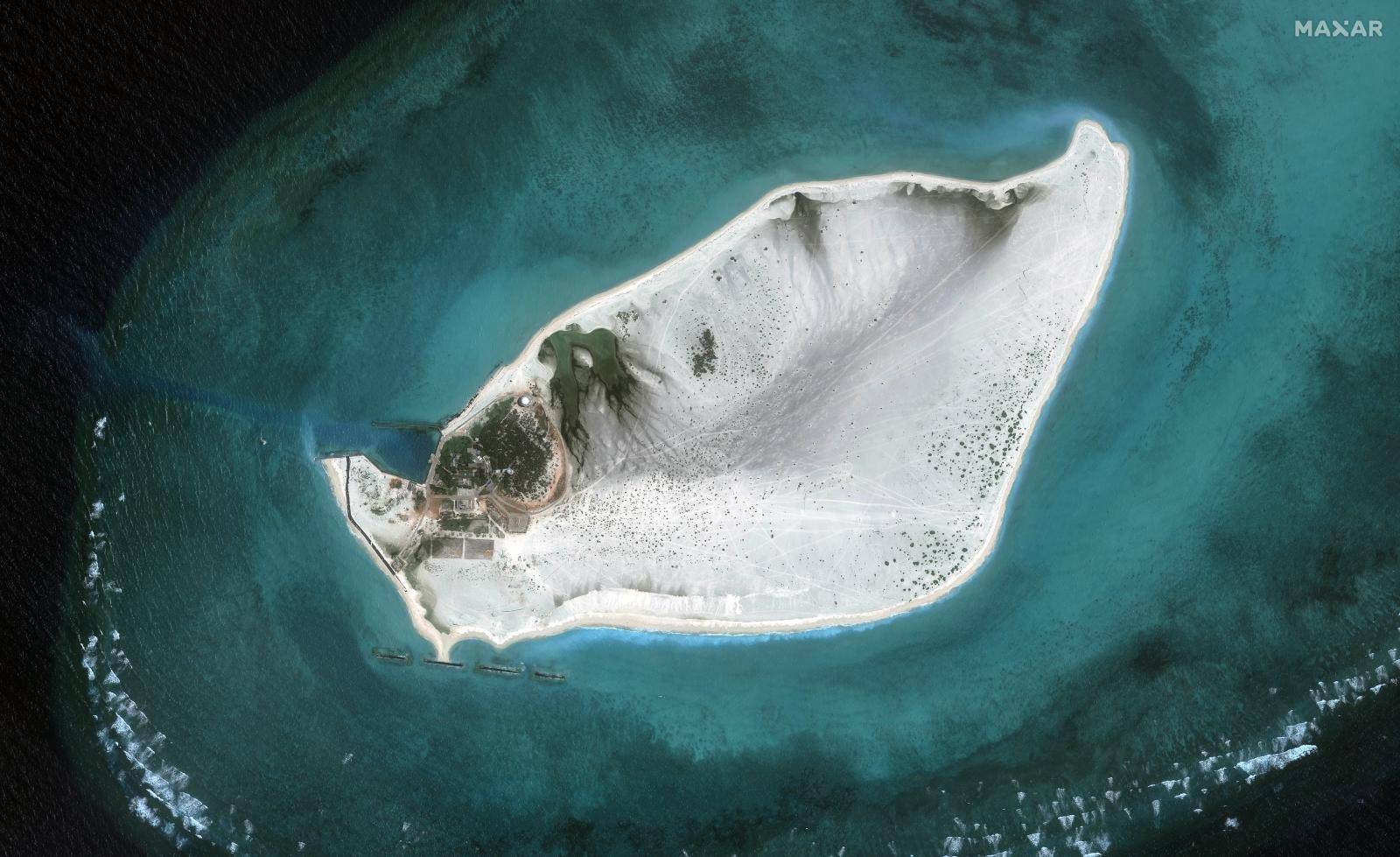

— Triton Island August 2022, top, and September 2024: Beijing has been upgrading the Triton outpost – known as Zhongjian Dao in China – with radar stations and other structures since 2015.
The enhanced facility on Triton is likely to offer a challenge to China’s competitors in the region and internationally.
China seized control of the Paracels from Vietnam in a 1974 naval battle, and competition for access to it waters has intensified since the recent discovery of oil and gas reserves. Chinese and Vietnamese maritime militia clashed off the coast of Triton in 2014.
In addition, American, British and Australian naval forces have for the past decade patrolled the waters to collectively challenge China’s contested ‘nine-dash-line’ claim to large stretches of the South China Sea.
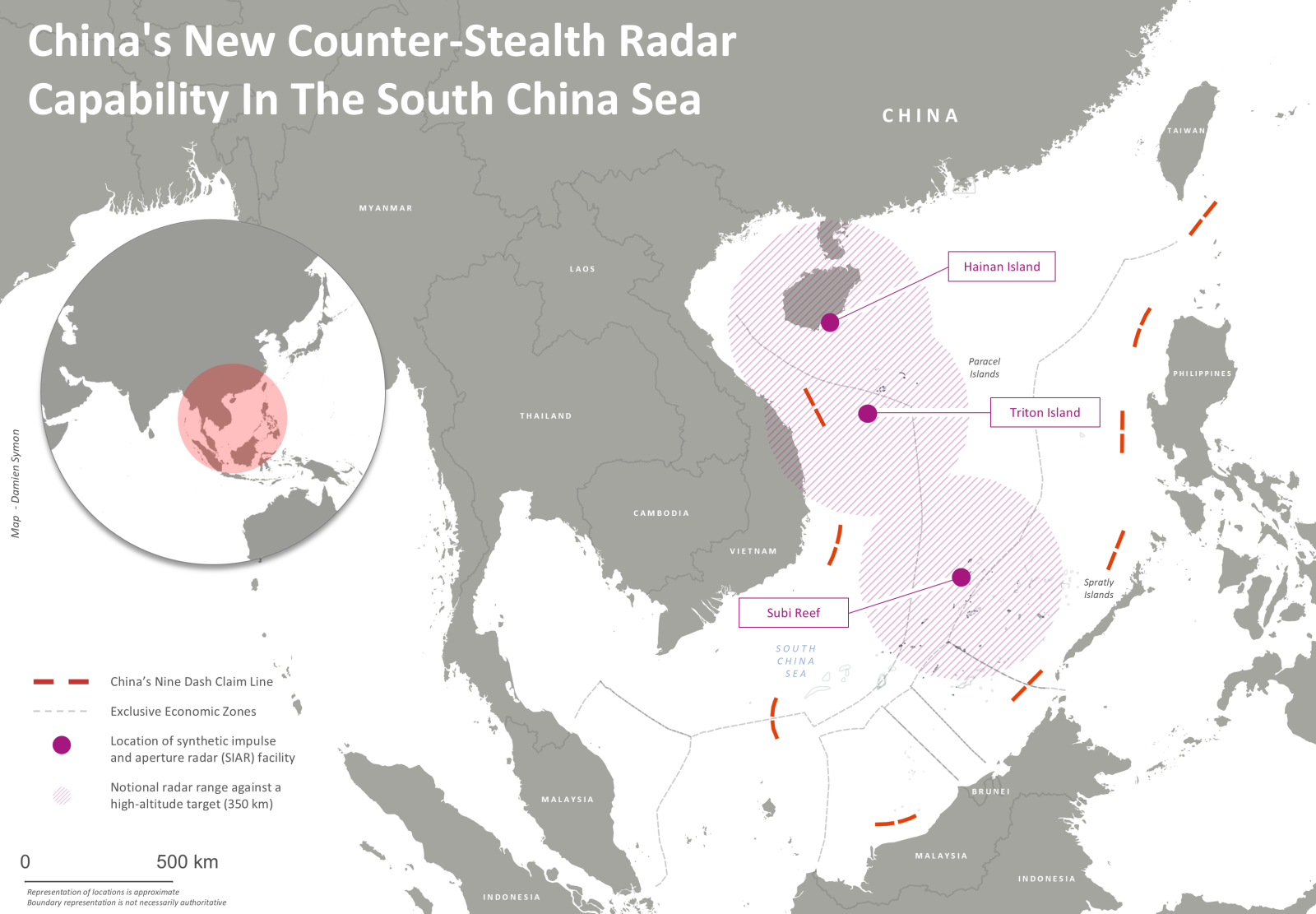
— Map credit: Damien Symon.
Overlapping anti-stealth network
A year after work was first identified on Triton, satellite images from Maxar have helped build a clearer picture of Beijing’s efforts to defend this strategic waterway.
The most striking development is the construction of a new radar system, known as SIAR – synthetic impulse and aperture radar – which purportedly detects stealth aircraft. The counter-stealth radar on Triton is characterized by its distinctive octagonal structure, which resembles another SIAR system built by China on Subi Reef in the Spratly Islands, south of the Paracels, in 2017. A half-completed tower also sits near the SIAR radar on Triton, which is likely to be the operations centre.
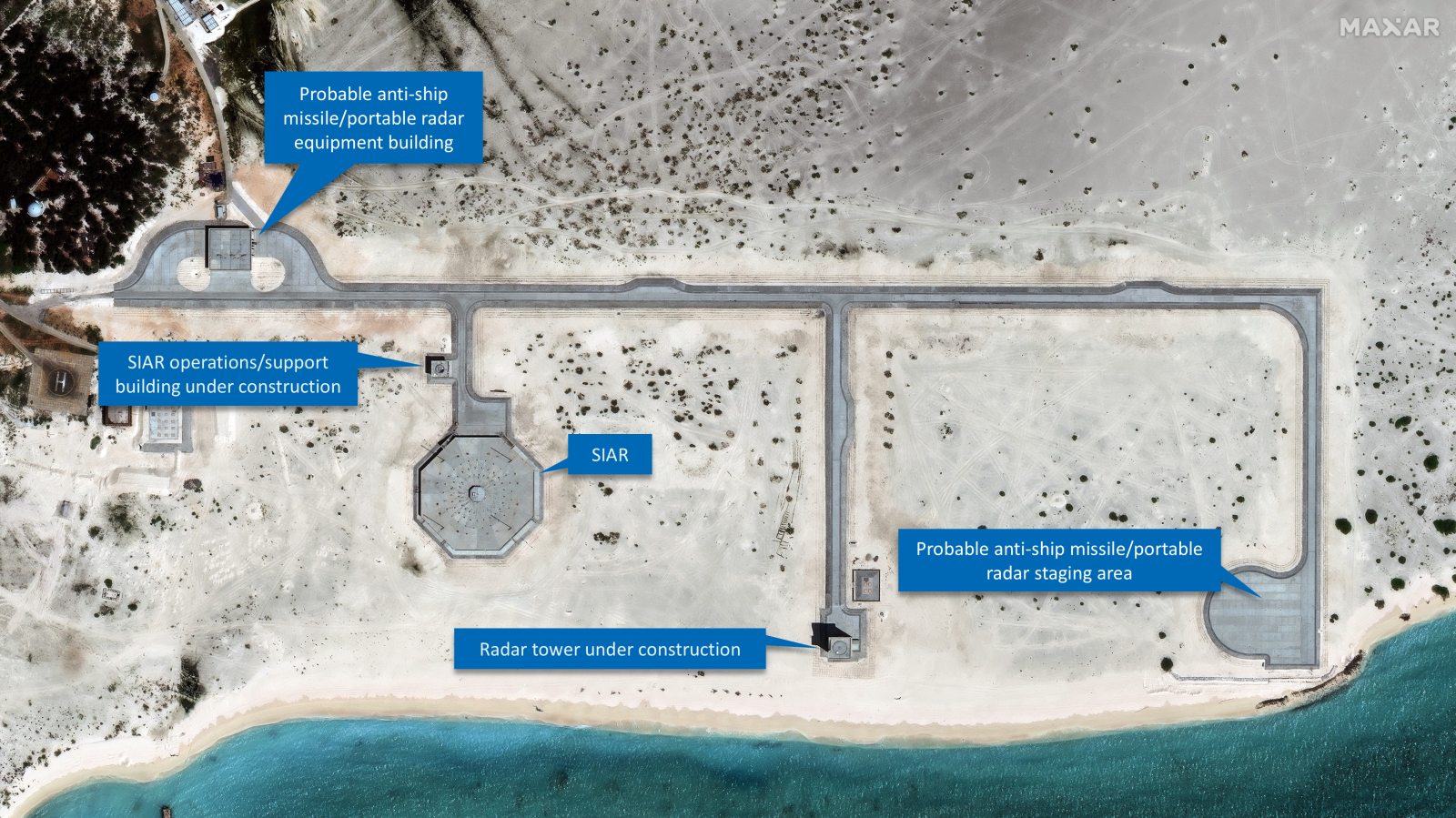
— Triton Island, September 2024: Satellite imagery disputes earlier assumptions that Beijing was building a 600-metre runway, revealing instead the development of a sophisticated counter-stealth radar system and a suspected launching point for an anti-ship missile battery.
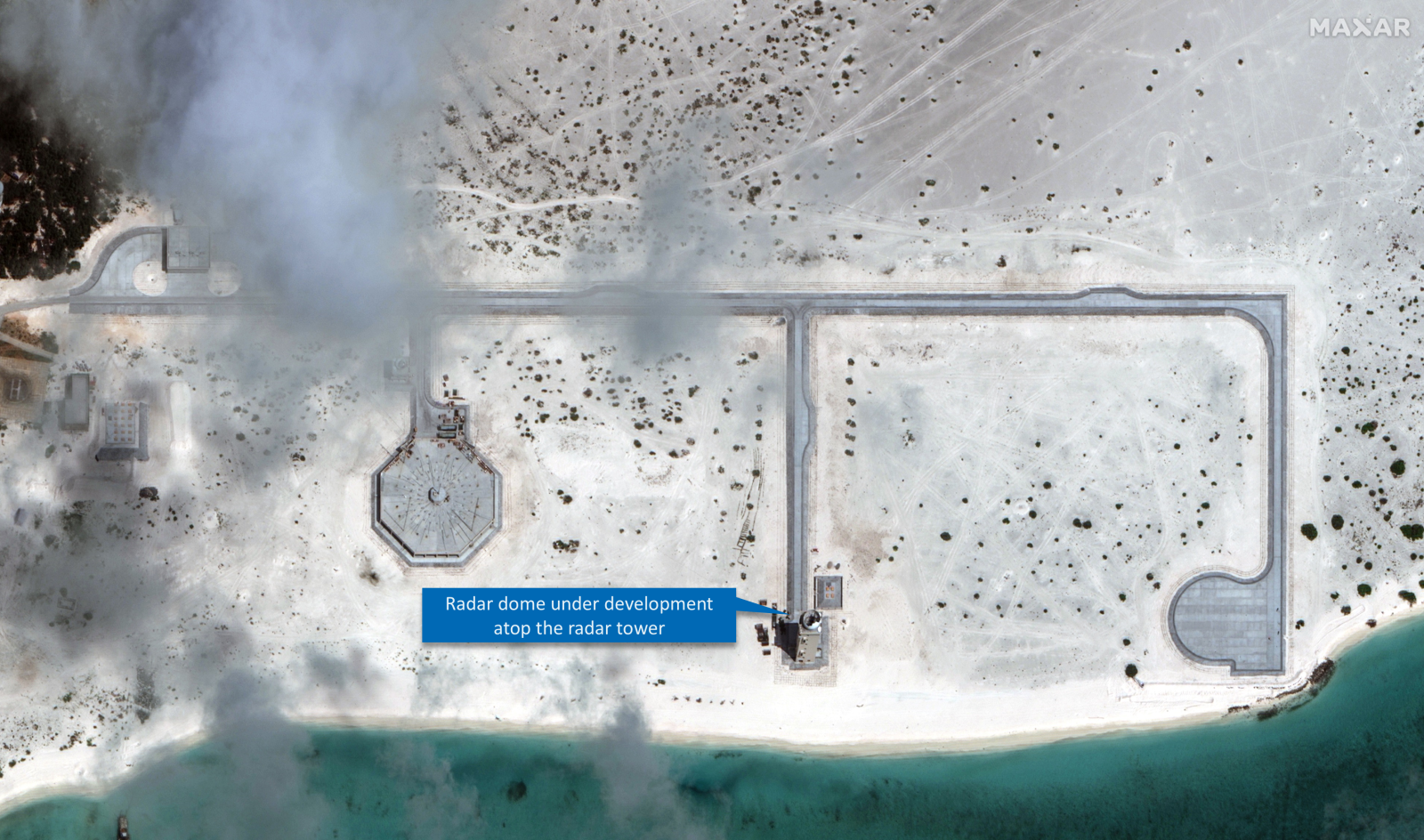
— Triton Island, October 2024: Developments continue on another radar tower, with a protective radome being built which will house the tower’s radar unit.
Once completed, the radar on Triton will form what is believed to be a wider network of at least three overlapping counter-stealth radars built across Chinese bases in the South China Sea over the past decade, including on Hainan Island, home to several Chinese naval bases.
The positioning of the radar on Triton, 320km south of Hainan, is telling, says J. Michael Dahm, Senior Resident Fellow for Aerospace and China Studies at the Mitchell Institute.
‘SIAR radars cannot see over the curve of the Earth, which means there is a gap in China’s air surveillance coverage between Subi Reef and Hainan Island. The Triton Island site will help close that gap’, said Dahm.
The aim, he suggests, is to give China contiguous counter-stealth radar coverage of the South China Sea.
More construction underway
The satellite images reveal other building projects on Triton. One is a large pad at the end of the road network which will probably be used as a launching point for a mobile anti-ship missile battery. The building at the northeast end of the road is probably a storage building for missile transport vehicles.
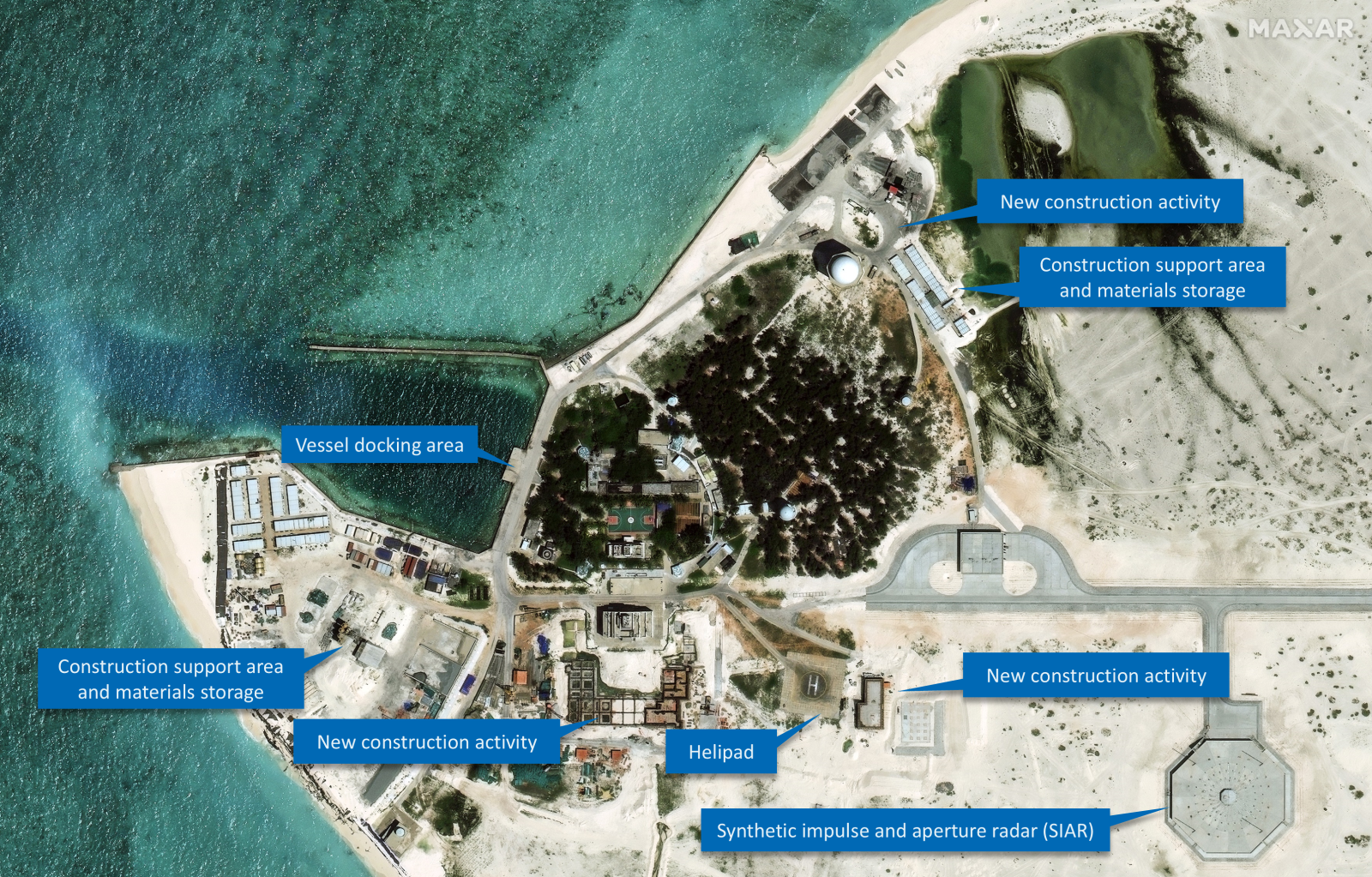
— Triton Island, September 2024: After rapid building work over the past year, Triton has become one of Beijing’s major intelligence hubs in the South China Sea, featuring new counter-stealth radar (SIAR) and suspected intercept signal buildings.
Diminishing Vietnam’s options
The development of a new counter-stealth radar system and other suspected signals intercept structures on Triton represents a notable increase in China’s intelligence capabilities in the Paracels. The Chinese Communist Party has not disclosed the purpose of the building work on Triton, but its effects on regional and global competitors are likely to be wide ranging.
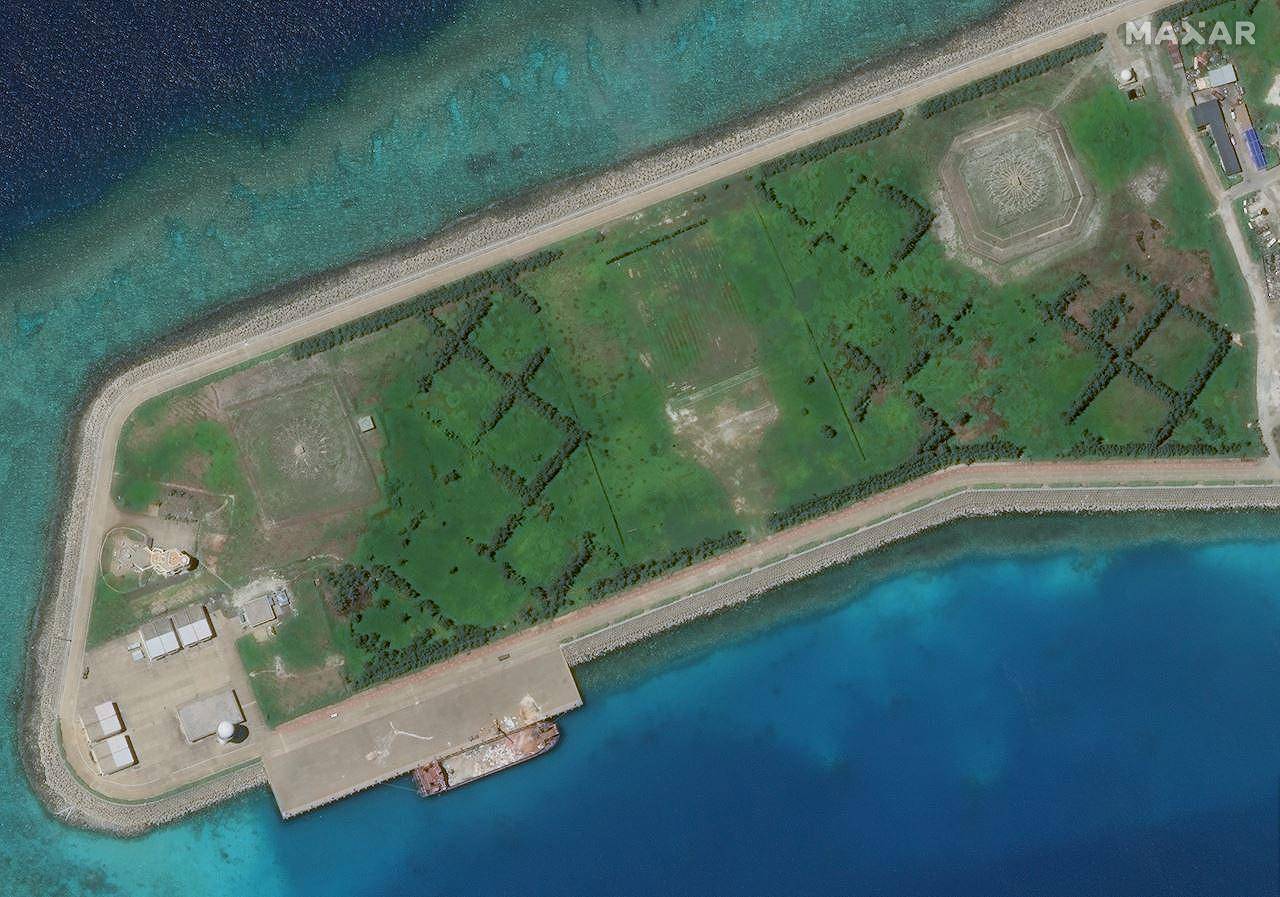
— Subi Reef, Spratly Islands, September 2024: The counter-stealth radar on Subi Reef, visible in the upper right-hand corner, was identified in 2017. It is believed to be the same radar capability as spotted in Triton.
For Vietnam, which is rapidly expanding its own bases in the South China Sea, the intelligence structures on Triton would significantly diminish its capacity to operate undetected in the area. Alongside existing radar on Triton which can detect sea-going vessels, Beijing now has the potential to track Vietnamese air movements and gain forewarning of Hanoi’s manoeuvres in the area, including efforts to access oil and gas deposits.
The desire to strengthen control over these resources may explain why China is fortifying Triton Island, says Bill Hayton, Associate Fellow in the Asia-Pacific Programme, Chatham House. ‘The developments might be a warning that China is planning to mount another drilling expedition’, he suggests.
The facility may also impede attempts by the American, British and Australian navies to challenge China’s ‘nine-dash-line’ claim by navigating the waters of the Paracels. ‘The new facilities on Triton may be an attempt by China to make such operations more difficult in the future,’ Hayton adds.
On a strategic level, the expansion of Beijing’s counter-stealth radar network across the Paracels may help to erode the technological superiority that US and allied military forces have enjoyed in the region over the past three decades.
